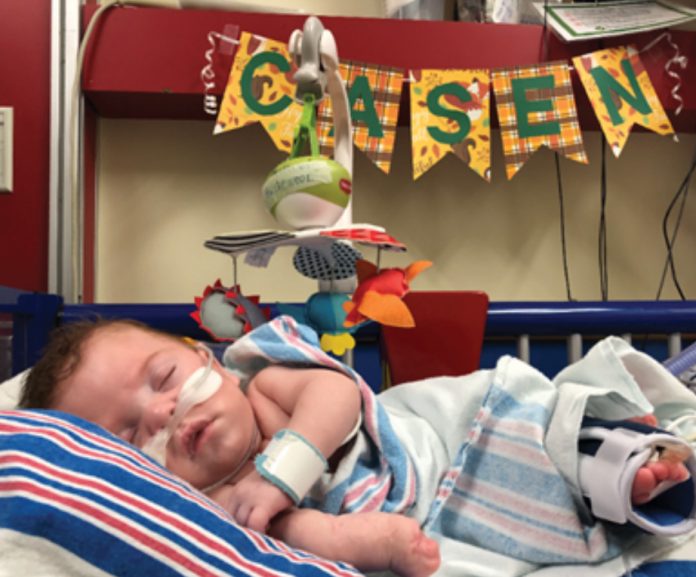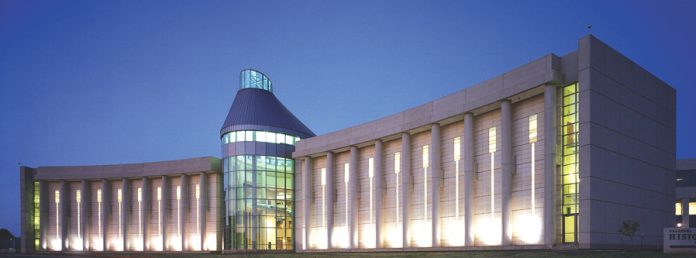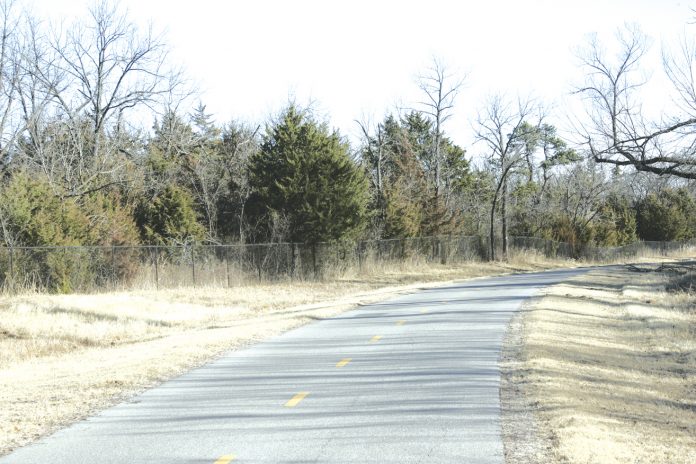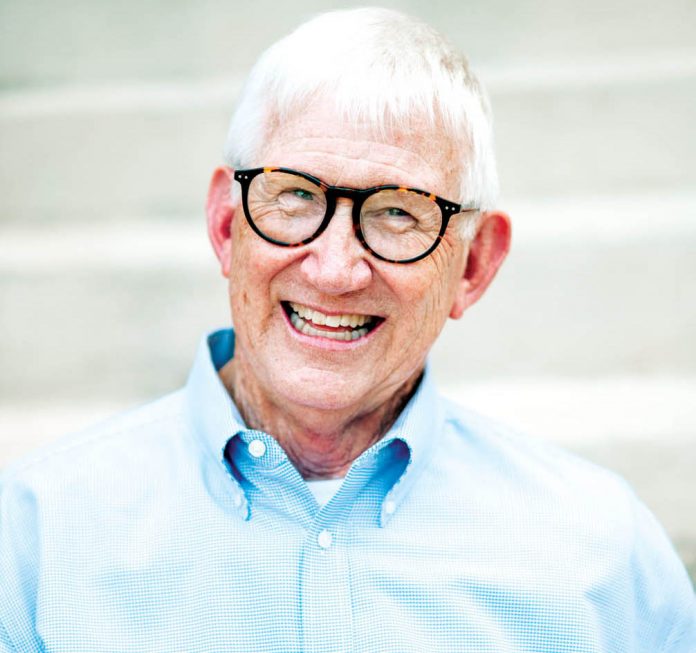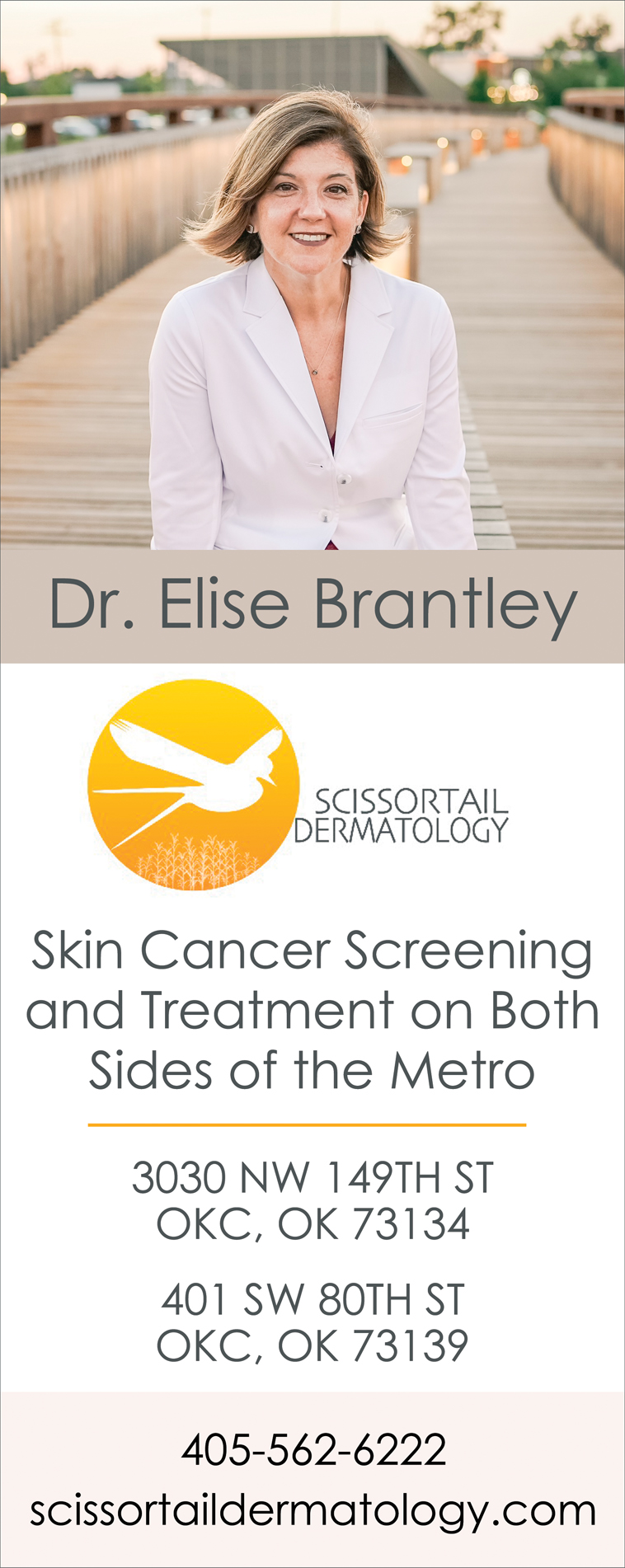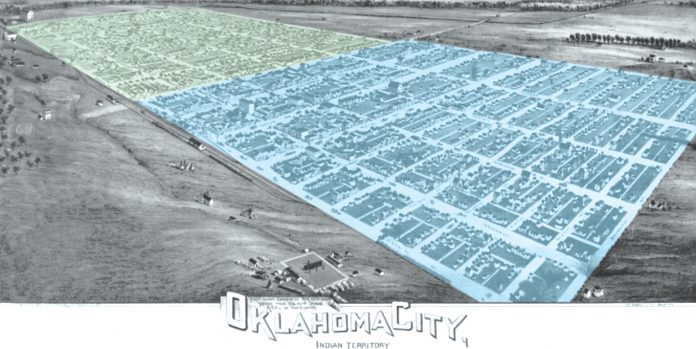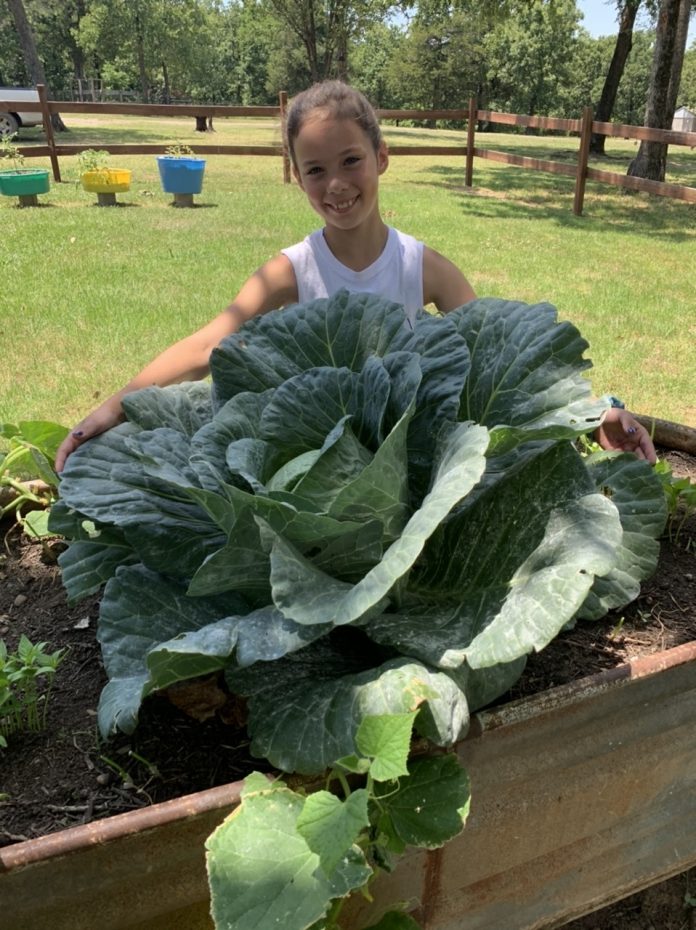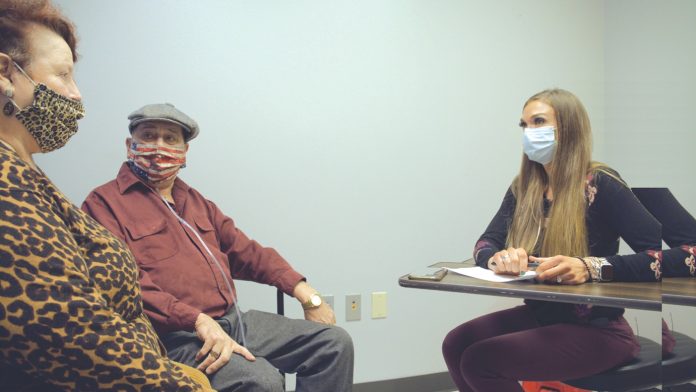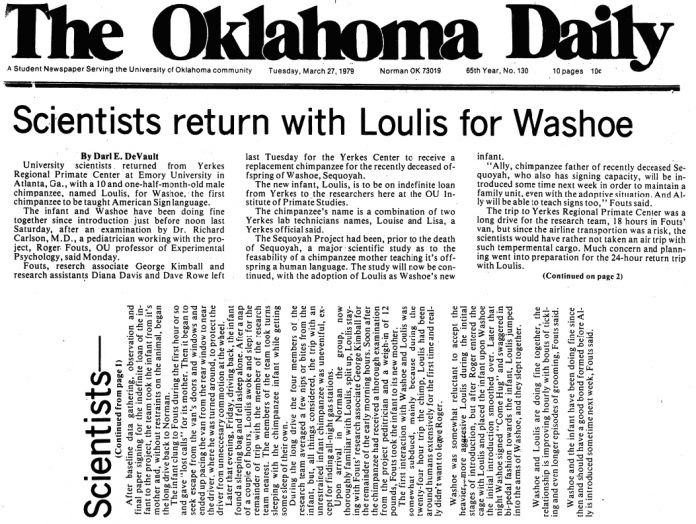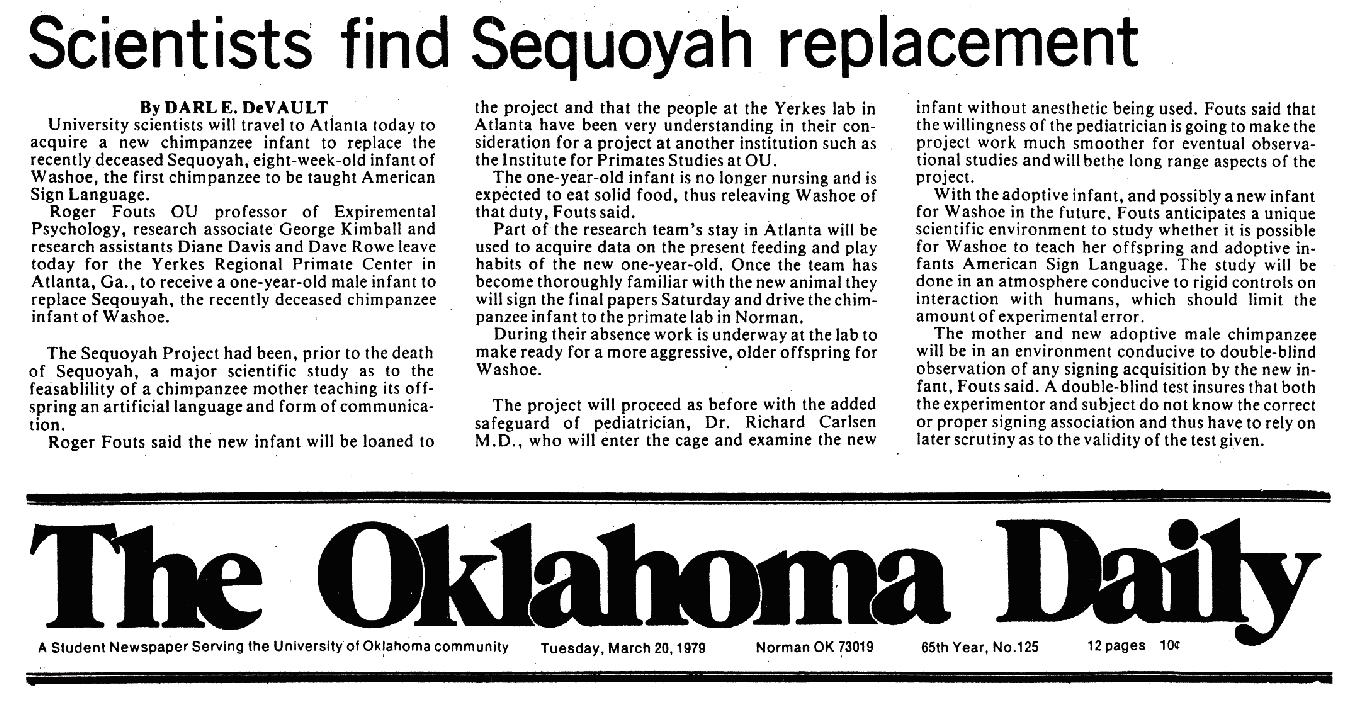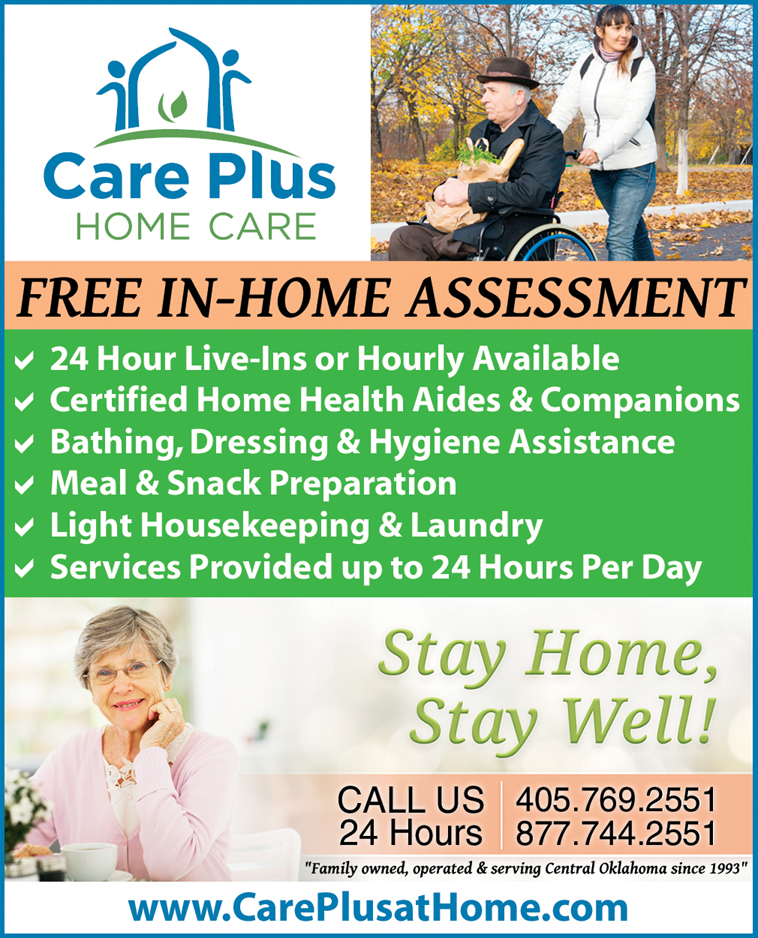
Casen Hazlewood of Ponca City is only two years old, yet he has spent much of his young life in the hospital. Casen was born on May 6, 2019 at just 26 weeks gestation. His mother Kari Hazlewood recalls the difficult pregnancy. “Casen and his identical twin brother, Hudson, had issues from the very beginning. They were diagnosed early on with what’s called twin-to-twin transfusion syndrome, where one of the babies gets more blood and nutrients than the other. In our case, Hudson was the dominant twin leaving Casen malnourished.”
When the boys were born, each weighed barely over a pound. Hudson was seemingly healthy given his size, while Casen struggled to survive. “Casen is a A picture containing person Description automatically generatedfighter. He has been battling something since before he was even born,” says Kari. “He may be tiny but he’s as tough as they come.”
It was determined Casen had selective intrauterine growth restriction, a condition that occurs when there is unequal placental sharing which leads to suboptimal growth of one twin. Casen was noticeably smaller and more compromised than his brother.
Sadly and unexpectedly, Hudson developed an infection and passed away 12 days after birth. When Casen came down with the same infection his parents feared the worse, but Casen somehow pulled through – as he would time and time again.
Casen would spend the first 154 days of his life in the neonatal intensive care unit.
“He was born in May and we finally got to take him home in October 2019,” remembers his mom. “We were home for six days when he suddenly stopped breathing and we had to rush him back to the hospital. This would unfortunately become our routine.”
Kari says each time Casen gets a mild cold or runs even a low-grade fever, he undoubtedly ends up back in the hospital. “Since his lungs aren’t fully developed he has a lot of respiratory issues and goes downhill fast, so at the first sign of sickness we just start heading to INTEGRIS Children’s. They are like our second family. We have spent so much time there. They all treat Casen as if he is their own child.” Doctors are hopeful Casen will eventually outgrow his frequent hospital visits as his lungs continue to develop and mature.
The staff at the pediatric intensive care unit at INTEGRIS Baptist Medical Center held a bubble send-off for Casen at the end of his last hospitalization, signifying the 177 days he has spent in the PICU overtime. “We just love Kari and Donnie and the entire Hazlewood family and wanted to do something really special for them,” says Erica Liddell, a certified child life specialist at INTEGRIS Children’s. “In all, between the NICU and the PICU and the 14 surgeries he’s endured, Casen has spent almost an entire year in the hospital. That’s half of his little life. So, we wanted to celebrate him in a big way.”
The send-off, which also included big sis Brynlee, was just in time for the holidays. The Hazlewoods say their Christmas wish is to keep Casen healthy and at home. “As much as we love the folks at INTEGRIS Children’s and want them to continue to be a part of Casen’s life,” says Kari. “We are hoping to see them less often in the new year! We want to see them socially, not just when Casen is sick.”


